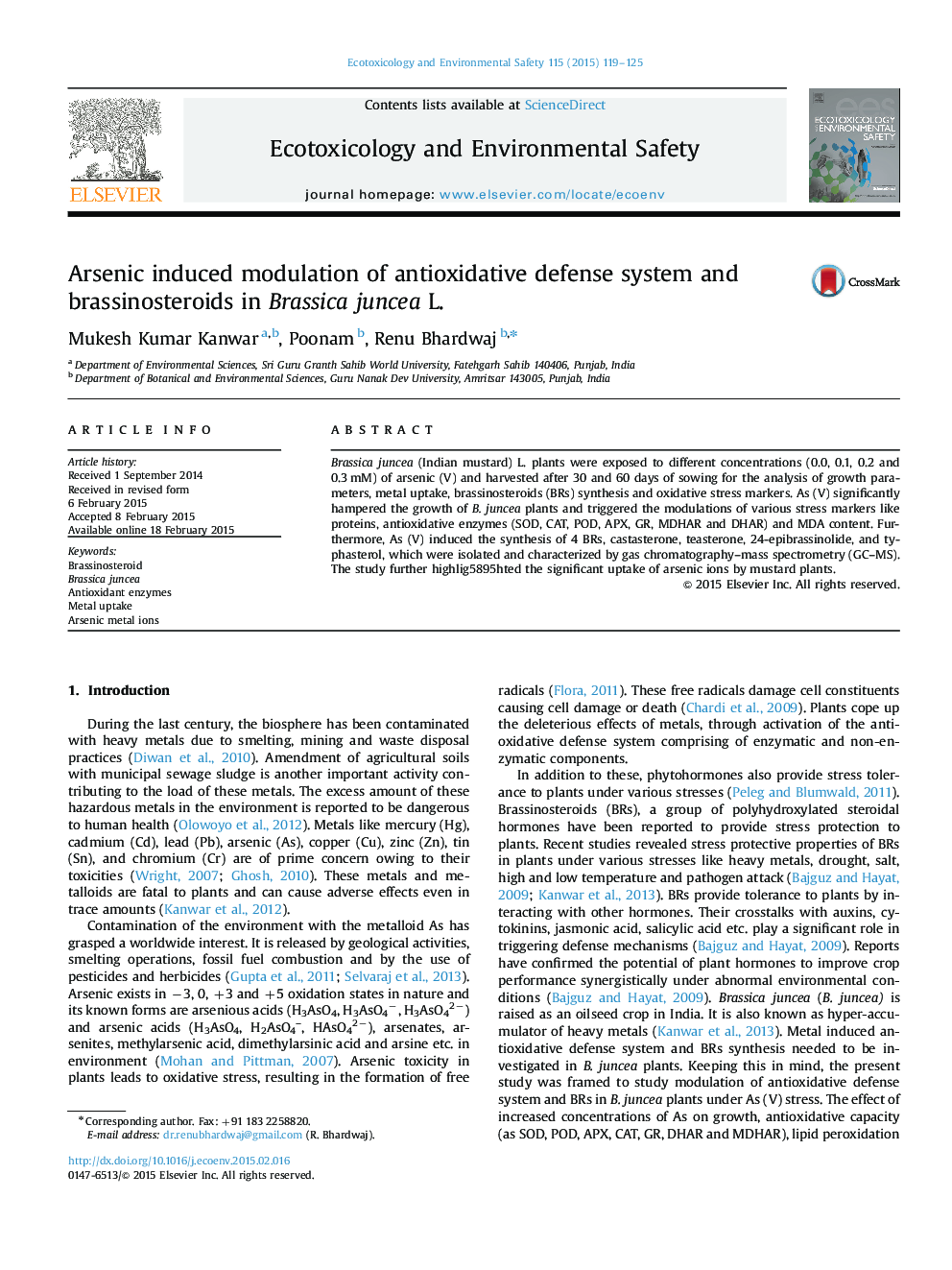| Article ID | Journal | Published Year | Pages | File Type |
|---|---|---|---|---|
| 4419733 | Ecotoxicology and Environmental Safety | 2015 | 7 Pages |
•Arsenic (V) exposure in mustard plants increased synthesis of four brassinosteroids.•Arsenic (V) treatment triggered the activation of antioxidative defense system in mustard.•Differential arsenic (V) accumulation was noted in shoots and leaves of Brassica.
Brassica juncea (Indian mustard) L. plants were exposed to different concentrations (0.0, 0.1, 0.2 and 0.3 mM) of arsenic (V) and harvested after 30 and 60 days of sowing for the analysis of growth parameters, metal uptake, brassinosteroids (BRs) synthesis and oxidative stress markers. As (V) significantly hampered the growth of B. juncea plants and triggered the modulations of various stress markers like proteins, antioxidative enzymes (SOD, CAT, POD, APX, GR, MDHAR and DHAR) and MDA content. Furthermore, As (V) induced the synthesis of 4 BRs, castasterone, teasterone, 24-epibrassinolide, and typhasterol, which were isolated and characterized by gas chromatography–mass spectrometry (GC–MS). The study further highlig5895hted the significant uptake of arsenic ions by mustard plants.
